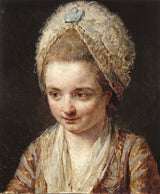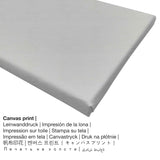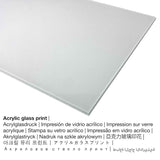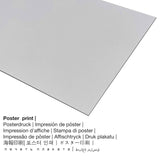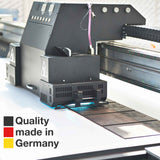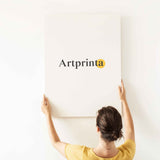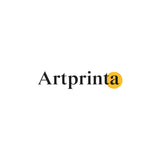Nicolas-Bernard Lépicié, 1774 - White Cap - ọmarịcha nka
Ụtụ gụnyere. Mbupu gbakọrọ na ndenye ọpụpụ.
Data edemede
"White Cap" is an artpiece painted by Nicolas-Bernard Lépicié in 1774. Ụdị nke ọrụ nka na-atụle nha nke Ogologo: 22 cm, obosara: 18 cm. Ihe nka izizi nwere ihe odide a: Signature - Signed left: "Lepicie 1774". Besides, this artpiece is included in the collection of Musée Cognacq-Jay Paris located in Paris, France. With courtesy of Musée Cognacq-Jay - le goût du XVIIIe Paris (ọha na eze).Ọzọkwa, ọrụ nka nwere akara kredit ndị a: . N'elu nke ahụ, nhazi bụ Eserese na nwere akụkụ ruru nke 1: 1.2, meaning that the length is 20% shorter than the width. The painter Nicolas-Bernard Lépicié was an artist, whose artistic style was mainly Rococo. The Rococo artist lived for a total of 49 years, born in the year 1735 and died in the year 1784.
Additional information from Musée Cognacq-Jay Paris (© - Musée Cognacq-Jay Paris - www.museecognacqjay.paris.fr)
This portrait of a young woman in indoor costume is a brushed study by Nicolas Bernard Lépicié after the same model which inspired the figure of the young mother in the "carpenter's family." This table is a cover of "carpenter" workshop on 1774 (1775 Salon, Booklet No. 21, non-localized), as amended by Lepicie in the sense of virtue and duty (see Burollet, Therese 2004 , p.205-208) .The model is much like the young wife of Marc-Etienne Quatremere Suzanne Sophie, born Lesueur-Florent, which was painted by Lepicie at the age of twenty, with her husband and two girls in the "Portrait of Marc-Etienne Quatremere and his family" (1780, Paris, Louvre, RF2002-5).
Quatremere Suzanne Sophie
Nkọwa ọrụ nka
| Aha nke eserese ahụ: | "White Cap" |
| Nhazi nka: | sere |
| Okwu nche anwụ: | nka ochie |
| Nhazi oge: | 18th narị afọ |
| Emepụtara na: | 1774 |
| Afọ nka: | gbara afọ 240 |
| Nha izizi: | Ogologo: 22 cm, obosara: 18 cm |
| mbinye aka izizi nka: | Signature - Signed left: "Lepicie 1774" |
| Ụlọ ihe ngosi nka / ebe: | Ụlọ ihe nkiri Cognacq-Jay Paris |
| Ebe ngosi nka: | Paris, France |
| ibe weebụ: | www.museecognacqjay.paris.fr |
| Ụdị ikike nka: | ngalaba ọha |
| Site n'aka: | Musée Cognacq-Jay - le goût du XVIIIe Paris |
Ozi nka ahaziri
| aha: | Nicolas-Bernard Lépicié |
| Ọrụ nke onye na-ese ihe: | onye na-ese ihe |
| Otu nka: | nna ukwu ochie |
| Ụdị nka: | Rococo |
| Nwụrụ na afọ nke: | 49 afọ |
| Amụrụ n'afọ: | 1735 |
| Afọ nwụrụ: | 1784 |
Họrọ ihe ị ga-achọ inwe
Maka mbipụta nka ọ bụla anyị na-enye ihe dị iche iche dị iche iche na nha. Nhọrọ ndị a dị maka n'otu n'otu:
- Bipụta na enyo acrylic: An acrylic glass print, which is sometimes named as a print on plexiglass, makes an artwork into beautiful wall décor and is a viable alternative option to canvas and aluminidum dibond art prints. The work of art is custom-made with the help of modern UV direct print technology. The real glass coating protects your custom fine art print against light and heat for several decades.
- Mbipụta kwaaji: The printed canvas, which should not be confused with a real painting on a canvas, is an image printed on an industrial printing machine. Your printed canvas of your favorite artwork will give you the unique opportunity of turning your very own fine art print into a large collection piece as you know from galleries. The advantage of canvas prints is that they are relatively low in weight, which implies that it is easy and straightforward to hang the Canvas print without any wall-mounts. Canvas prints are suited for all kinds of walls.
- Mbipụta akwụkwọ mmado (akwa akwa akwa): The Artprinta poster is a UV printed sheet of flat cotton canvas with a slight surface finish. Please keep in mind, that depending on the size of the canvas poster print we add a white margin of something between 2-6cm round about the print motif in order to facilitate the framing with your custom frame.
- Mbipụta ọla (aluminium dibbond): These are metal prints on aluminium dibond with an outstanding effect of depth. A direct Aluminium Dibond Print is the perfect start to fine art reproductions with aluminum. For our Direct Print On Aluminum Dibond, we print your favorite work of art onto the aluminium composite surface.
Nkọwapụta ngwaahịa
| Nkewa edemede: | nka nka |
| Usoro mmeghari: | dijitalụ mmeputakwa |
| Usoro nhazi: | mbipụta dijitalụ |
| Mmalite nke ngwaahịa a: | arụpụtara na Germany |
| Ụdị ngwaahịa: | a na-achọ |
| Eji ngwaahịa a chọrọ: | ịchọ mma mgbidi, mkpokọta nka (mmeputakwa) |
| Nhazi nka nka: | usoro eserese |
| Njikwa oyiyi: | 1: 1.2 ogologo ruo obosara |
| Ntụgharị nkọwa akụkụ onyonyo: | ogologo bụ 20% mkpụmkpụ karịa obosara |
| Akwa mmeputakwa dị: | Mpempe akwụkwọ, akwụkwọ mmado (akwụkwọ kwaaji), mbipụta ọla (aluminium dibond), mbipụta iko acrylic (nwere ezigbo mkpuchi iko) |
| Mbipụta kanvas (akwa akwa n'elu etiti ihe ndọtị) ụdị nha dị iche iche: | 50x60cm - 20x24", 100x120cm - 39x47", 150x180cm - 59x71" |
| Mbipụta iko acrylic (nke nwere ezigbo mkpuchi iko): | 50x60cm - 20x24", 100x120cm - 39x47" |
| Mbipụta akwụkwọ mmado (akwụkwọ kwaaji): | 50x60cm - 20x24", 100x120cm - 39x47" |
| Nhọrọ nha nke mbipụta aluminom (aluminium dibond material) | 50x60cm - 20x24", 100x120cm - 39x47" |
| ụba: | ngwaahịa anaghị emebi emebi |
Legal disclaimer: We try our utmost in order to describe the art products with as many details as possible and to showcase them visually on the different product detail pages. Please bear in mind that the colors of the print products and the imprint may differ marginally from the image on your screen. Depending on the settings of your screen and the quality of the surface, color pigments can unfortunately not be printed as exactly as the digital version. In view of the fact that all the fine art prints are processed and printed by hand, there may also be slight variations in the size and exact position of the motif.
Ederede a bụ ikike ọgụgụ isi ma chekwaa ya site na nwebisiinka © | Artprinta (www.artprinta.com)

